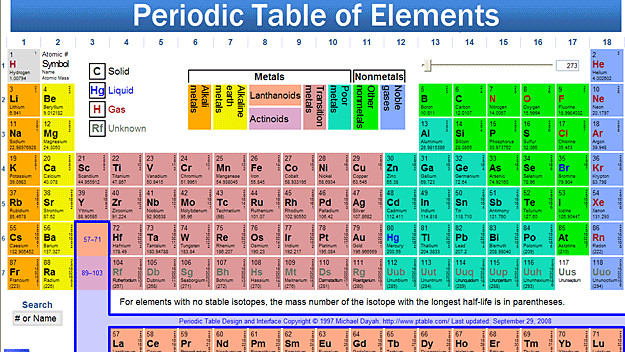

Shape can be a very distinctive clue for interpretation. Shape refers to the general form, structure, or outline of individual objects. Variations in tone also allows the elements of shape, texture, and pattern of objects to be distinguished. Generally, tone is the fundamental element for distinguishing between different targets or features. Tone refers to the relative brightness or colour of objects in an image. The nature of each of these interpretation elements is described below, along with an image example of each. Identifying targets in remotely sensed images based on these visual elements allows us to further interpret and analyze.
/close-up-of-periodic-table-760294957-5a00794822fa3a0037921324.jpg)
Examining satellite images on the weather report, or following high speed chases by views from a helicopter are all familiar examples of visual image interpretation. Visual interpretation using these elements is often a part of our daily lives, whether we are conscious of it or not. Observing the differences between targets and their backgrounds involves comparing different targets based on any, or all, of the visual elements of tone, shape, size, pattern, texture, shadow, and association. Recognizing targets is the key to interpretation and information extraction. Finally, we are used to seeing only the visible wavelengths, and the imaging of wavelengths outside of this window is more difficult for us to comprehend. Combining an unfamiliar perspective with a very different scale and lack of recognizable detail can make even the most familiar object unrecognizable in an image. Viewing objects from directly above also provides a very different perspective than what we are familiar with. Indeed, interpretation benefits greatly in many applications when images are viewed in stereo, as visualization (and therefore, recognition) of targets is enhanced dramatically.

What makes interpretation of imagery more difficult than the everyday visual interpretation of our surroundings? For one, we lose our sense of depth when viewing a two-dimensional image, unless we can view it stereoscopically so as to simulate the third dimension of height. This radiation is measured and recorded by a sensor, and ultimately is depicted as an image product such as an air photo or a satellite image. Targets may be defined in terms of the way they reflect or emit radiation. As we noted in the previous section, analysis of remote sensing imagery involves the identification of various targets in an image, and those targets may be environmental or artificial features which consist of points, lines, or areas.


 0 kommentar(er)
0 kommentar(er)
